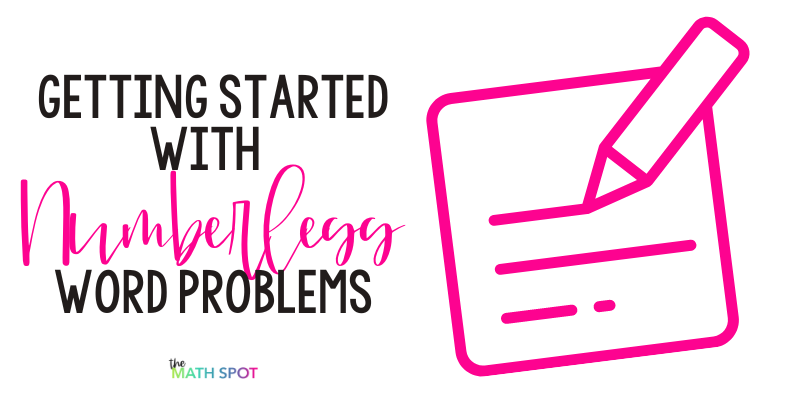Word problems are the place where numbers, operations, and comprehension collide. Numberless word problems are a tool you can use to boost comprehension so that your students can confidently apply their knowledge of numbers and operations to solve.
If you’ve never used this tool before, or if you have tried numberless word problems but didn’t quite get the results you were looking for, let’s go back to basics.

What Are Numberless Word Problems?
Numberless word problems are as simple as they sound– word problems and math contexts where the numbers have been removed.
In my preferred method of implementation, a numberless word problem begins with no numbers *and no question*. It’s simply a context. The teacher facilitates discussion by prompting students with questions and by progressively introducing both numbers and a question into the context.
Sample Numberless Word Problem Progression:
- Multiple packs of markers are on the shelf in the back to school aisle. Mrs. Ramirez purchases some of them.
- 5 packs of markers are on the shelf in the back to school aisle. Mrs. Ramirez purchases some of them.
- 5 packs of markers are on the shelf in the back to school aisle. Mrs. Ramirez purchases 3 packs of markers.
- 5 packs of markers are on the shelf in the back to school aisle. Mrs. Ramirez purchases 3 packs of markers. How many markers will be left on the shelf?
Why Use Numberless Word Problems?
By presenting your students with contexts that are initially numberless word problems and by slowly introducing one piece of information at a time, your students are forced to focus on the context of the problem rather than simply plucking numbers out and adding them together.
Numberless word problems — and the discussion that goes along with them– also help to support your students who were previously “keyword hunters“. These students are searching word problems for words like “in all” “together” “take away” etc and are applying the operation that those words imply whether or not the operation actually applies to the context at hand.
Numberless word problems are also an amazing tool when it comes to promoting math talk in your classroom!
How Can I Prompt Discussion During a Numberless Word Problem?
On the first step of your word problem, you can ask questions such as:
- What is happening in this problem?
- What is this story about?
- Who is in this story?
- What *could* be the number of…. in the story?
- Draw a picture that matches the story.
- What does the word [more, less, some, fewer, got, gave….] tell us about what is happening in the story?
When you introduce the first number back into the word problem talk to your students about how that information impacts their understanding of the context.
- What do you know now?
- What could the number of…. be?
- How does knowing [the new number] change your thinking about the story?
- What are you wondering about the problem?
- What does the word [more, less, some, fewer, got, gave….] tell us now about the story?
After introducing more information to your students, continue the discussion.
- What new information do you have now?
- What do you notice about the story?
- Draw a picture of what is happening in the story.
- How did [the new number] change your thinking about the problem?
- What question *might* we ask about the information in this story?
And, finally, when the question is introduced, continue the discussion connecting your students’ comprehension of the story problem with their understanding of numbers and operations.
- What is the story asking us to think about?
- What operation could we use to solve this problem?
- What is the question asking?
And after solving…. - Does your answer make sense? How do you know?
Free Numberless Word Problem Sets
I would love for you to try a set of *FREE* numberless word problems. Click below to grab yours!





